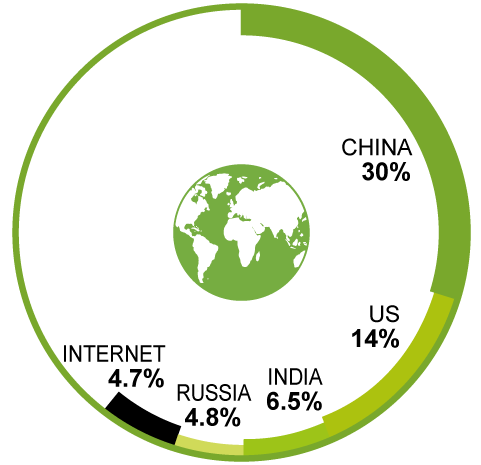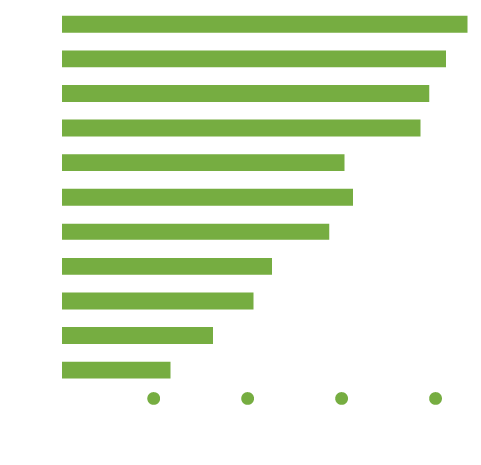The Internet pollutes
How much does the Internet pollute?
This is a very difficult question to answer accurately but it is somewhere between 1% and 4.7% of total global CO2 emissions.
That's as high as 1.6 billion tons of carbon dioxide produced every year - four and a half times the quantity produced by the whole of the UK.
If the internet was a country, it could have the 5th greatest CO2 emissions, just behind Russia.
While CO2 emissions in most developed countries are going down in general, emissions caused by the internet are going up and up.
Worldwide, there has been a three-fold increase in the last 10 years alone, with a further five-fold increase predicted by 2040.
This is likely to make the internet the world's most polluting industry by 2050.

How does this happen?
Every time we send an email, browse the web or watch a video, data is sent across the internet.
The computers that transfer and process this data require power and cooling.
So the more data that's transferred, and the more processing required, the greater the power consumed and the greater the CO2 emitted.
As computing and internet speeds have gone up and data costs have come down, the trend has been to regard excessive data transfer and processing as inconsequential.
But this assumption is starkly at odds with reality. For example, the carbon footprint of the average web page has tripled in the last ten years alone, and has largely been without discernible benefits to the user.

Web apps can be green
Web apps and websites send and process data and, therefore, impact the environment. However, their environmental impact varies greatly according to how they are engineered.
Badly engineered web apps that transfer too much data and do unnecessary processing not only cause harm to the environment. They also impact user experience as they are slower and less responsive.
The industry has become less diligent about excessive and gratuitous use of code. It is not uncommon for an engineer to add a whole library of code to a project just to use one or two features and save them a bit of time, or for a web app to be making hundreds of requests for mountains of data that might not be used.
To solve the problem you need to improve the engineering but also the culture. Stakeholders, product owners, designers and testers all have an important role to play in creating a culture where the environment is one of the first concerns, not the last.

How we can help
For Figoya, environmental impact and user experience are core considerations at all stages of the development process. From scoping business requirement, wireframes, UX and design, through to technical architecture, code and testing.
We only work with the best engineers and testers. Engineers motivated to write efficient, evironmentally friendly code and testers dedicated to ensuring green performance.
We want to make a difference and we think you do too.
